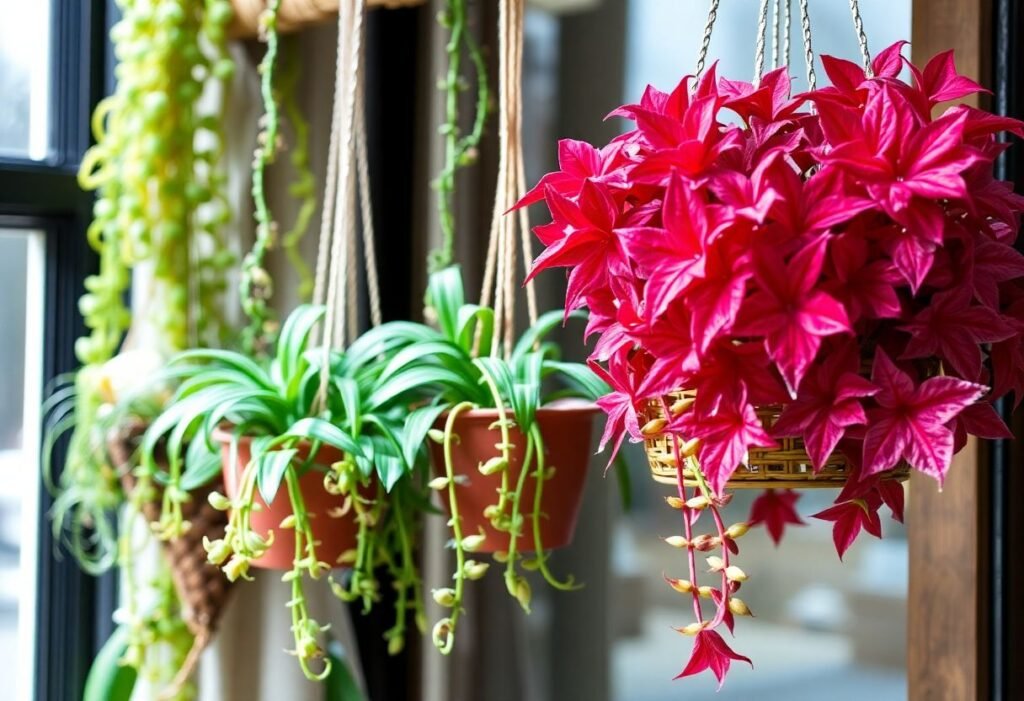Why choose hanging plants for winter?
Hanging plants add vibrant color and beauty to your indoor spaces, even during the bleakest winter days. These plants invite warmth and life into your home, transforming dull corners into lively spots. Selecting the right hanging plants for winter is pivotal — varieties like succulents or pothos not only stand the test of time but also bring character to your décor. The art of caring for these plants during winter can enhance their beauty and your home.
Finding the perfect spot for your hanging plants
In winter, the positioning of your hanging plants matters deeply. Avoid placing them in drafty areas near windows or direct heat sources as this can lead to unfavorable conditions and harm the plants. Aim for spaces that ensure moderate humidity and access to filtered light, providing them the best chance for growth during colder months. Protecting your plants from rapid temperature fluctuations is essential to their well-being.
Watering your hanging plants in winter
Maintaining the right moisture level for your hanging plants in winter is crucial. Unlike growing seasons, these plants require less frequent watering. It’s better to check the soil moisture before watering to prevent overwatering, which can lead to root rot. Consider misting the leaves occasionally to replicate humidity, especially in dry indoor air. This thoughtful approach to watering will keep your hanging plants healthy and invigorated.
Choosing low-maintenance hanging plants
Not all hanging plants are created equal when it comes to winter hardiness. Selecting varieties that are adaptable to lower light and humidity can save you time and effort. Consider opting for spider plants or ivy, which require minimal care and are known for their resilience. Choosing the right hanging plants will ensure that even during the winter, your greenery remains vibrant and fresh while requiring less attention.
Lighting needs for hanging plants in winter
With shorter days in winter, the need for proper lighting increases significantly. Many hanging plants can suffer from insufficient light, leading to leggy growth. Consider investing in grow lights to supplement natural light, supporting healthier and more robust plants. A well-lit environment will promote healthy growth, allowing your hanging plants to flourish even in the coldest seasons.
Protecting your hanging plants from pests and diseases
Despite being lower maintenance, hanging plants are not immune to pests and diseases, which can thrive in winter’s cozy indoor environments. Regular checks for any signs of trouble can aid in early detection and treatment. Prune any dead or diseased foliage immediately, and ensure good air circulation around the plants. Taking these steps can prevent infections and ensure your plants stay healthy.
Conclusion
Winter doesn’t have to be a dull season for your home’s greenery. By choosing the right hanging plants, placing them appropriately, and caring for them attentively, you can enjoy their beauty all season long. Let this be a call to action — pick up those pots, embrace the chill, and enhance your home with vibrant, life-affirming plants that symbolize resilience and growth.
Disclaimer
The content of this article is for informational purposes only and should not be seen as a substitute for professional advice. Each plant has specific care needs, and results may vary based on individual circumstances.

















